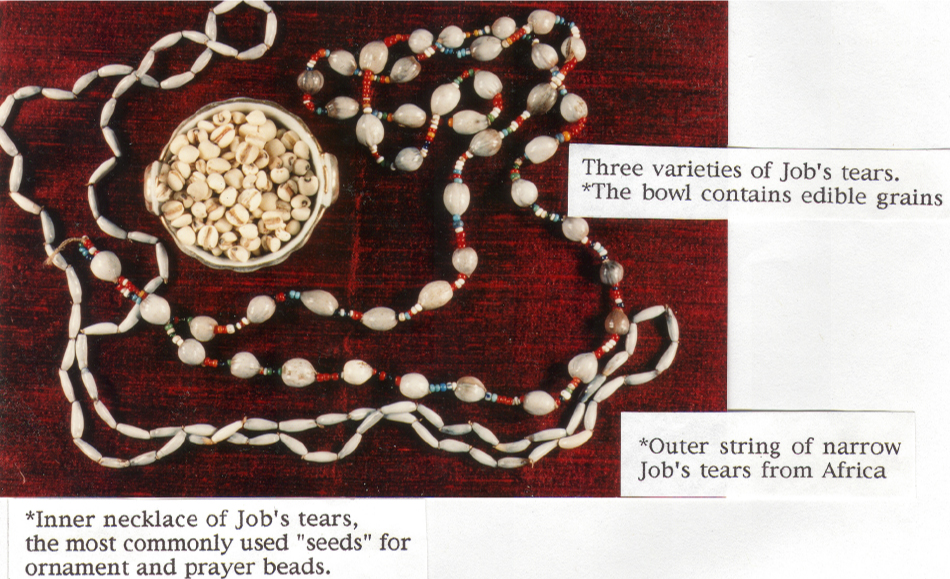
Although it looks like a seed, Coix lacryma-jobi is not a true seed, but a caryopsis, the specialized fruit of a grass. A native of Asia, it is the “seed” most commonly used for ornament around the world. Its shape suggests a tear and recalls the sufferings of Job.
Many of the 700 different tribal groups of Papua, New Guinea wear the seeds and stems of pit-pit grass (their name for Job's tears) for decoration. New widows of the Hengnofi tribe cover themselves in necklaces made of the seeds which may weigh as much as 50 pounds. Over several months the strands are removed one by one until the period of mourning is over.8
The Cherokee have a legend about this grain that has found a home in America. They say that when their tribe was exiled from North Carolina to Oklahoma in 1838, their tears fell to the ground as they made this strenuous and sorrow-filled trek. The next spring plants grew where the tears had fallen, producing seeds in the shape of a tear. Today these “corn beads” as the Cherokee call them are made into necklaces as a reminder of that trail of tears.9
The grains are extensively used as ornaments in some Afro-Brazilian cults. They are worn as amulets in Colombia, where they are believed to protect against rheumatism. The seeds also have charm value for the Tarahumara of Mexico.
A variety of Job’s tears is a staple food in some parts of Asia.
 |
BACK |
TOP |
FWD |